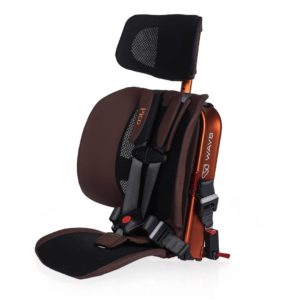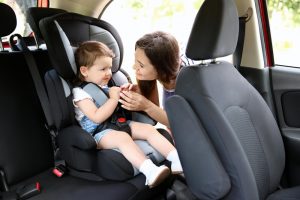Parents make a lot of investments and purchases for their children, but a car seat is one of the most vital pieces of merchandise parents will ever buy. Their ability to keep your child safe in the event of an accident is invaluable, which is why people start pulling their hair out when it’s time to buy one.
How can you know which seat is the best, if any of them are better than the rest? Are certain features better than others? Will it be comfortable enough for your child, support them while they sit, and be easy enough for you to install correctly?
Buying a car seat might seem like a nightmare, but it doesn’t have to be. We’ve created this car seat buying guide to help make the process a little less stressful. Here’s what you need to know before you buy.
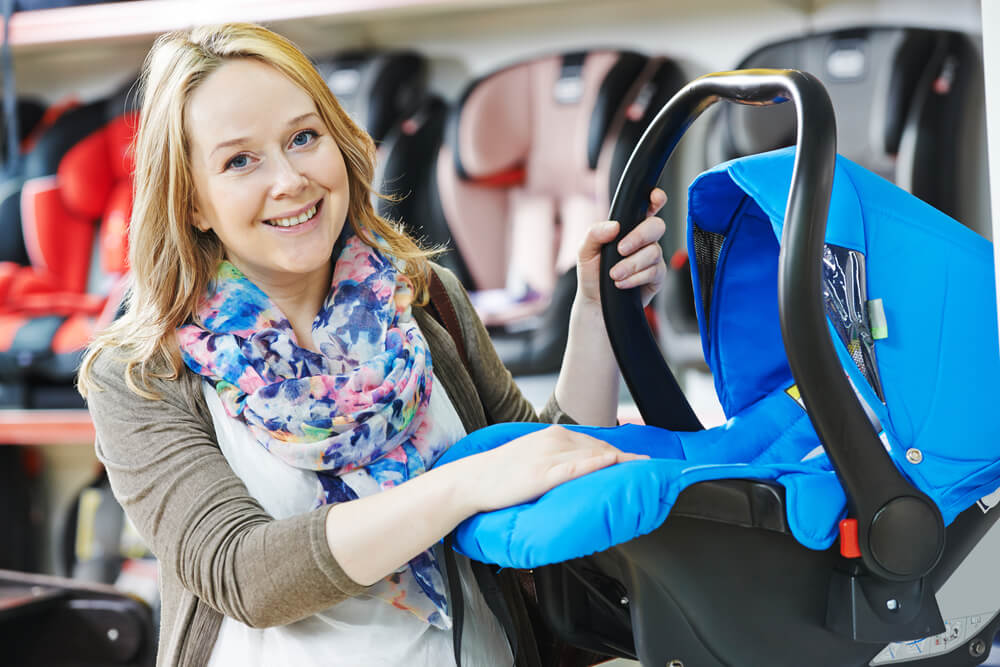
Understand The Basics
Did you know that a hospital will not let you leave unless you have a car seat suitable for your newborn?
It’s federal law, but states also have their own rules and regulations as to which infant seats are appropriate. These rules change from year to year, which means the car seat you remember riding in is 100% out of date.
The Academy of Pediatrics, along with several other agencies, keep an updated safety checklist for you to read. As of this writing, the general guidelines are as follows:
- Children under two years must be in a rear-facing seat
- Use a forward-facing harness up to age seven
- Booster seats are required for ages eight to at least ten, with age twelve being the maximum cutoff
- Never use a seat that has previously been in a wreck
- All children should ride in the backseat until they are thirteen
- Always check the seat’s expiration date
- Never use a recalled seat
- Seats must hook up to your car’s LATCH system
- Know the weight and height restrictions
The basics are simple but understanding the complexities of these rules will help you pick out and purchase the best car seat for both you and your child. First, you need to understand the different seating positions.
Types of Seats
Car seats fall into rear-facing, forward-facing, and booster categories. Each is suitable for a different age group, which most manufacturers explicitly list on their product pages.
1. Rear-Facing

Newborns and babies fit into the rear-facing varieties best. These seats are suitable for up to three-year-old children depending on their weight and height limitations, however. You can always find this information on the box, on the base of the seat, and in online descriptions.
Infant seats help parents out with detachable bases, allowing them to carry the seat or attach it to a compatible stroller. Weight ranges are generally four to 40-pounds, which means your child will grow out of these models quickly. However, their premium safety features are ideal for this age group.
2. Convertible Seats
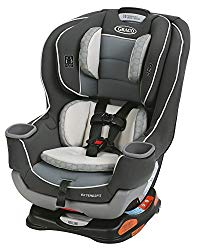
Convertibles can be placed in your car in both rear and forward-facing positions. Depending on the model, they may even offer inserts to accommodate infants. The benefit here is that your child can stay rear-facing for a longer duration thanks to increased weight limits.
Convertible seats typically have adjustable features that allow them to grow with your child. Some even feature detachable parts that turn them into booster seats. These are a top choice for parents looking to save money, but keep in mind that they rarely detach for stroller use.
3. Booster
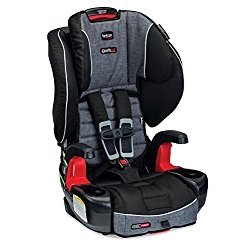
Depending on the size and weight of your child, booster seats are recommended for ages four through twelve. They still incorporate a harness but can also allow your child to use a regular seatbelt when the time comes.
Side impact protection is available on high-back models, but you can also opt for the easily portable backless model. Backless models feature no harness, relying solely on the seatbelt of your car. The benefit is that they raise the child to make the belt more effective.
4. All-in-One
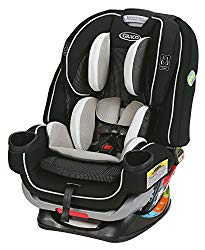
Finally, some seats have it all. An all-in-one seat is exactly what it sounds like, a seat that can grow with your child from the day it leaves the hospital to the time they’re ready to kick the booster seat. These options can be pricey, but they may help you save money in the long run.
Before You Buy
Now that you have an understanding of which type of seat might be best for your child, there are five things to keep in mind before you buy anything. The first is simply making sure your car is compatible. Any 2002 or newer model features the LATCH anchor system and top tether that securely connects a car seat.
The second aspect of car compatibility is size. Just make sure your cat can accommodate the size and shape of the car seat, and you’re good to go. If your car is older than 2002, you might still have the LATCH and tether system. Double-check your car’s manual to make sure yours is compatible.
Next, it’s essential to find something that fits your budget. A higher price tag doesn’t determine the safety of the seat. A $500 model might have different features that make it easier to install or adjust, but a $100 model will provide the same level of safety.
Weight and height limitations are also vital when buying a car seat. If your child falls outside of them, they won’t be safe in the event of a crash. Purchase something your child fits into with room to grow and keep track of their measurements.
Finally, there’s installation. A properly installed car seat can mean the difference between life and death. If you don’t have a model to practice with (ask a friend if you can), then there are hundreds of YouTube videos available to help you out. Once you do buy a seat, practice securing it until there’s less than an inch of wiggle space.
Terms to Know
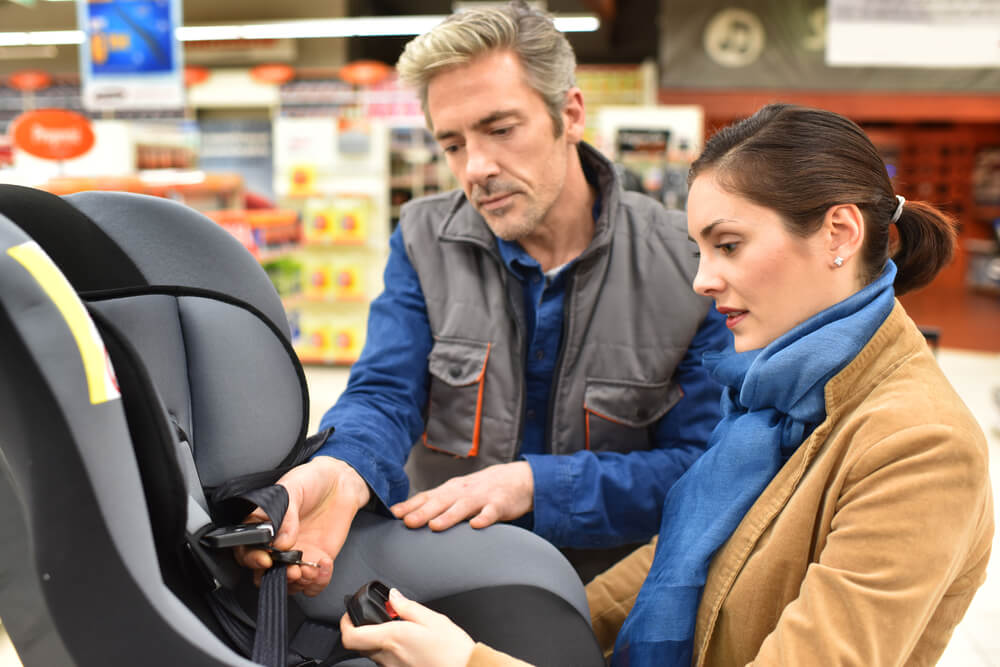
Knowing car seat terminology is the toughest part for new parents. What’s a locking retractor? How about a tether? Do you know anything about seat belt syndrome?
If you can’t answer those questions, don’t panic. Learning these vocabulary words is a lot easier than you might think. Here’s a quick lesson to help you with your search.
1. Adjustable Foot
This is a system on rear-facing models that allows you to customize the angle of the seat. The adjustable foot essentially locks the seat into the angle that works best for your child.
2. Automated Locking
The seatbelt you use features automated locking, ensuring the belt stays tight in the event of a crash. Car seats have extra support in this area with cinches and other mechanisms that keep the belt in place. You might also see these labeled as emergency locking retractor.
Related: Seat Belt Locking Clip
3. Belt Path
This is simply where the seatbelt threads through the car seat. Most seats have multiple paths, especially if they grow with your child. Always look at the instructions to ensure you’re using the right one.
4. Chest Clip
Those little harnesses feature a clasp or clip mechanism to secure your child. Companies incorporate all sorts of features into the clips and harnesses from flex-fit fabric to smart devices that alert parents if the child unlocks their restraints.
5. Lower Anchors, Attachments, and Tethers
These are what hold the seat in place. Lower anchor attachments on car seats connect the LATCH anchors in your seat’s creases for a secure hold. Tethers work similarly, hooking onto the top part of the LATCH system to keep the seat from flipping forward.
6. Registration
Every car seat comes with a registration card, kind of like electronics. By filling the card out and sending it in, the company can quickly notify you of a recall.
7. Seat Belt Syndrome
You’ll find this term when looking at safety ratings. Seat belt syndrome includes bruising or other injuries from the seat belt during a crash. Threaded adequately through the belt path, booster seats help reduce this phenomenon. Harnesses, on the other hand, avoid these injuries altogether.
8. All About the Base
Terms like detachable base, level indicator, and one-hand adjust are standard in this industry. All of them are simply a manufacturer’s way of saying, “We made this seat easier to install.” Easy installation not only makes on-the-go days with your child more bearable, but it helps ensure you’ve hooked the seat up properly.
Are You Ready To Buy?
Now that you know more about car seats and their terminology, you should feel a little more confident in your buying decision. The truth is that any car seat is a perfect fit for your family so long as you set it up correctly, and it fits your child.
So, get out there and buy with confidence! Start by using our guides below:

